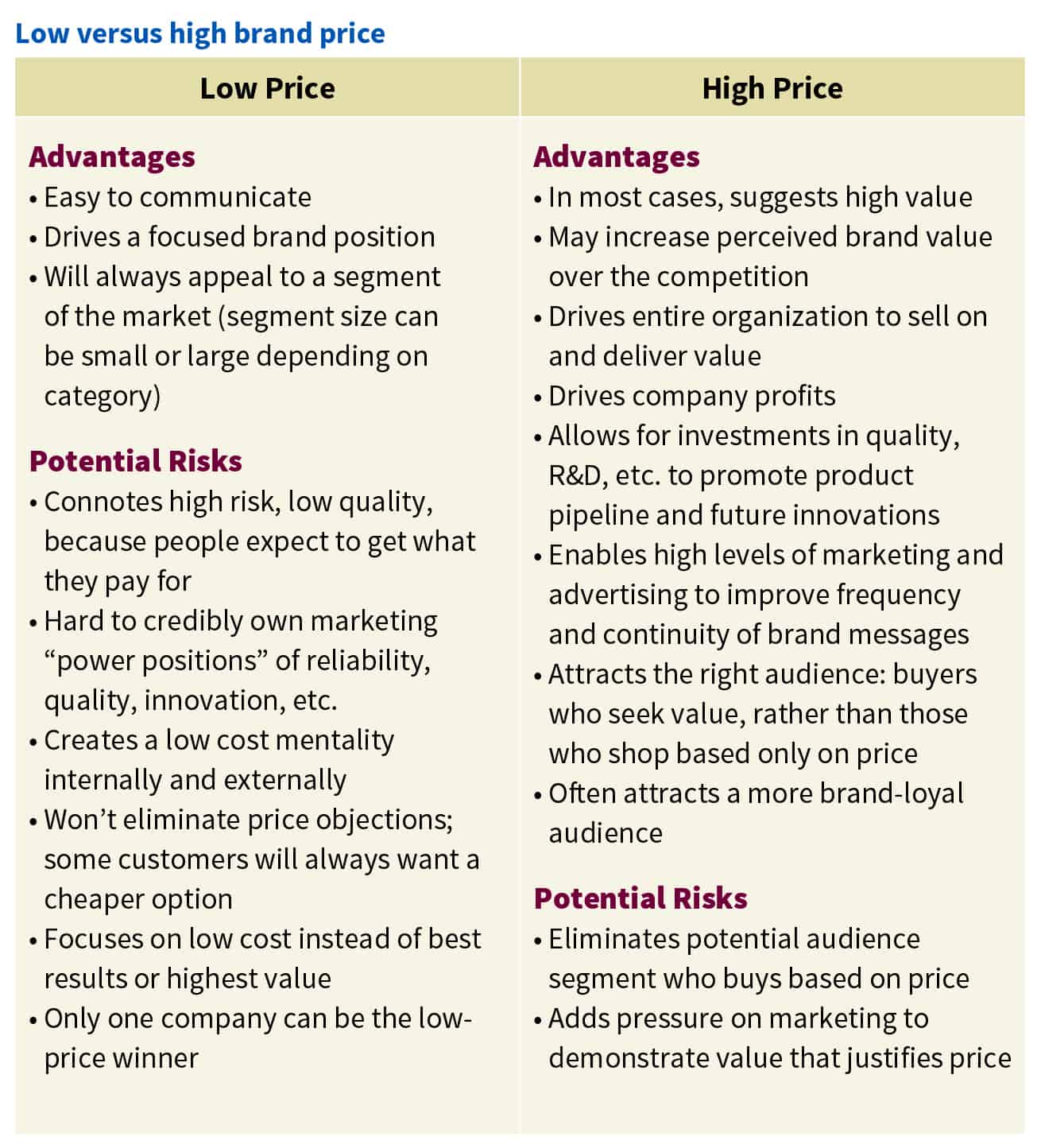Don’t believe your price is too high without proof
For any product or service, pricing helps determine success in the marketplace. Correct pricing maximizes profits and supports the brand. The wrong price diminishes potential profits.1 Although lowering price is a common tactic to increase sales volume, pricing experts find 80 to 90 percent of poorly chosen prices are too low.2
Does a lower price really lead to higher profits?
Reducing price sometimes increases sales volume, but it always reduces margin (if costs stay the same). At a lower price, volume must increase enough to offset lost margin before profit will increase.3

EXECUTIVE SUMMARY
- Managers rate price as the highest marketing pressure they face.3
- Reducing price cuts margin, so volume must increase enough to offset lost margin before profit will increase.3
- 80 to 90 percent of poorly chosen prices are too low.2
- Both low and high prices have advantages and potential risks (see table on back for comparisons).
Choosing the right price
How can marketers determine whether to price their brand low or high? Let’s look at the advantages and potential risks of both.

Consider brand value before lowering your price
Naturally, pricing has a very strong impact on profit.3 So before lowering your price, evaluate and understand the value of a high price in your market. Include market research to determine customer perception of your product’s value—and how much they’re willing to pay for it. Instead of considering a price cut, first consider increasing brand value.
Effective communication can add value to nearly all services and products, including commodities. An attractive 20 oz. bottle of “filtered” water sells for $1.09 at convenience stores—a price 4,027 times higher than tap water (which is also filtered, but less attractive and convenient). People perceive the product as valuable, so they’re willing to pay a high price. Increasing the perceived value of your product can be a profitable option. And remember—a high price is easily lowered, but once a low price hits the market it might be impossible to raise.
Fighting price competition without eroding the brand
3M uses distinct brands to appeal to premium and low-price markets.
In situations where a brand must compete on price, marketers might have to fight a price war. This was the case for category leader Post-it® brand notes. How did 3M compete? By marketing a second “price fighting” brand, Highland,™ from Minnesota Mining and Manufacturing (also known as 3M)!
A pack of three Post-it notes costs $1.40 and projects quality with rich yellow paper and four-color, easy-open packaging.
At 63¢, everything about Highland suggests low price, from faded yellow paper to generic one-color packaging. Each brand targets a different audience segment and offers different features and benefits based on how much customers are willing to pay. Post-it retains its premier position, and with Highland, 3M can still play the price game.

1 Michael Marn and Robert Rosiello. “Managing price, gaining profit,” Harvard Business Review, September-October 1992.
2 Craig Zawada, McKinsey and Company. “Pricing new products,” The Pricing Advisor, July 2004.
3 Robert Dolan and Hermann Simon. Power Pricing, New York: 1996.
Post-it® is a registered trademark of 3M.
Highland™ is a trademark of Minnesota Mining and Manufacturing.
